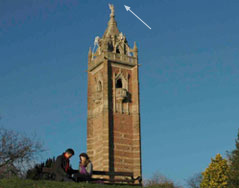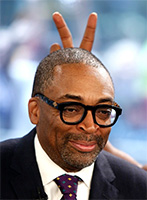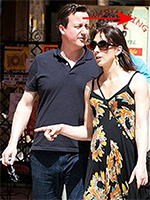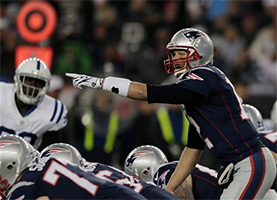Tangents
in
Art and Design
by Spencer Goldade
Closed Corner
A closed corner is when a shape or item isolates the corner of an image.
- We see this used in web design a lot to create corner ads.
- That's right, tangents aren't always bad!
Halved Shape
When a symmetrical shape is cut off, by the border of the page or a larger shape, it will create an uncomfortable feeling.
- Candid photos that chop people off.
- portraiture artists often do half a headshot on purpose for the effect it creates.
Tension Point - Fused Edge With Border
When an item comes too close, or fuses with, the edge of the border.

Tension Point - Fused Edge With Shape
When two items comes very close to each other,
or just barely fuse together.
- One of the most common design blunders and blessings.
- Can easily focus a viewer's attention.

Skimmed Edge
Similar to a tension point or fused edge, but shares a whole edge.

Stolen Edge
One item steals the edge or contour of another.

Hidden Edge
An edge of an item is hidden by another.
- How big is it?
- Where does it end?
- What shape is it?

Split Apex / Image Alignment
When multiple items, especially symmetrical ones, share the same axis.

- This happens in text too.
- This happens in text too.
- I stand out.
- This happens in text too.
- This happens in text too.
Antlers and Growths
When the placement of one item near another causes you to associate them too closely.

Pointing Shape
When one item seems to be pointing to another, drawing attention to it or away from something else.
Reinforced by objects normally expected to be pointed at things or have targets- pointing fingers, guns and other weapons, spotlights, direction eyes are looking
- Can be caused by negative space forming a pointing shape as well.
- Can distract on purpose. "Hey, look over there!"


Notes:
- Tangents occur not just in design.
- Copy, illustration, and even fine art are all affected.
- Even the novels you read at night have tangents in their typesetting.
- You should assess each iteration of your work for new tangents.
- A talented artist/designer can utilize tangents to their advantage.
What Should I Do?!
If you're looking to fix your tangents, you could:
- Add/Remove space.
- Add/Remove contrast.
- Alter the colour and/or tone.
- Alter your composition so the tangents are added on purpose and benefit the design instead of hurt it.
which means sometimes breaking the rules.
J. M. Brodrick
That's All, Folks!
- Partial photo and info credit: emptyeasel.com
- Photo credit: Gordon's Gallery
- Slideshow by: Monkeyslunch - aka Spencer Goldade
Make your own HTML slideshow:
- Original functionality by Rob Flaherty